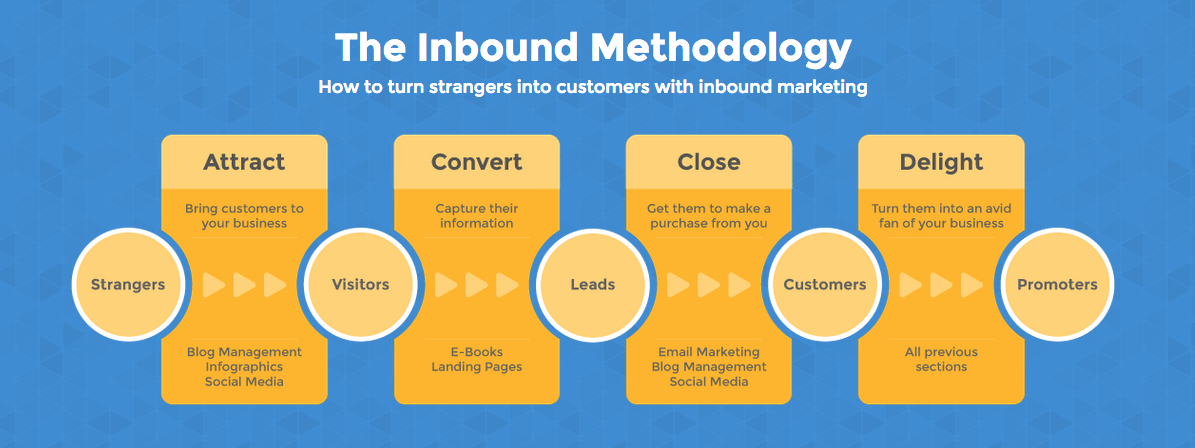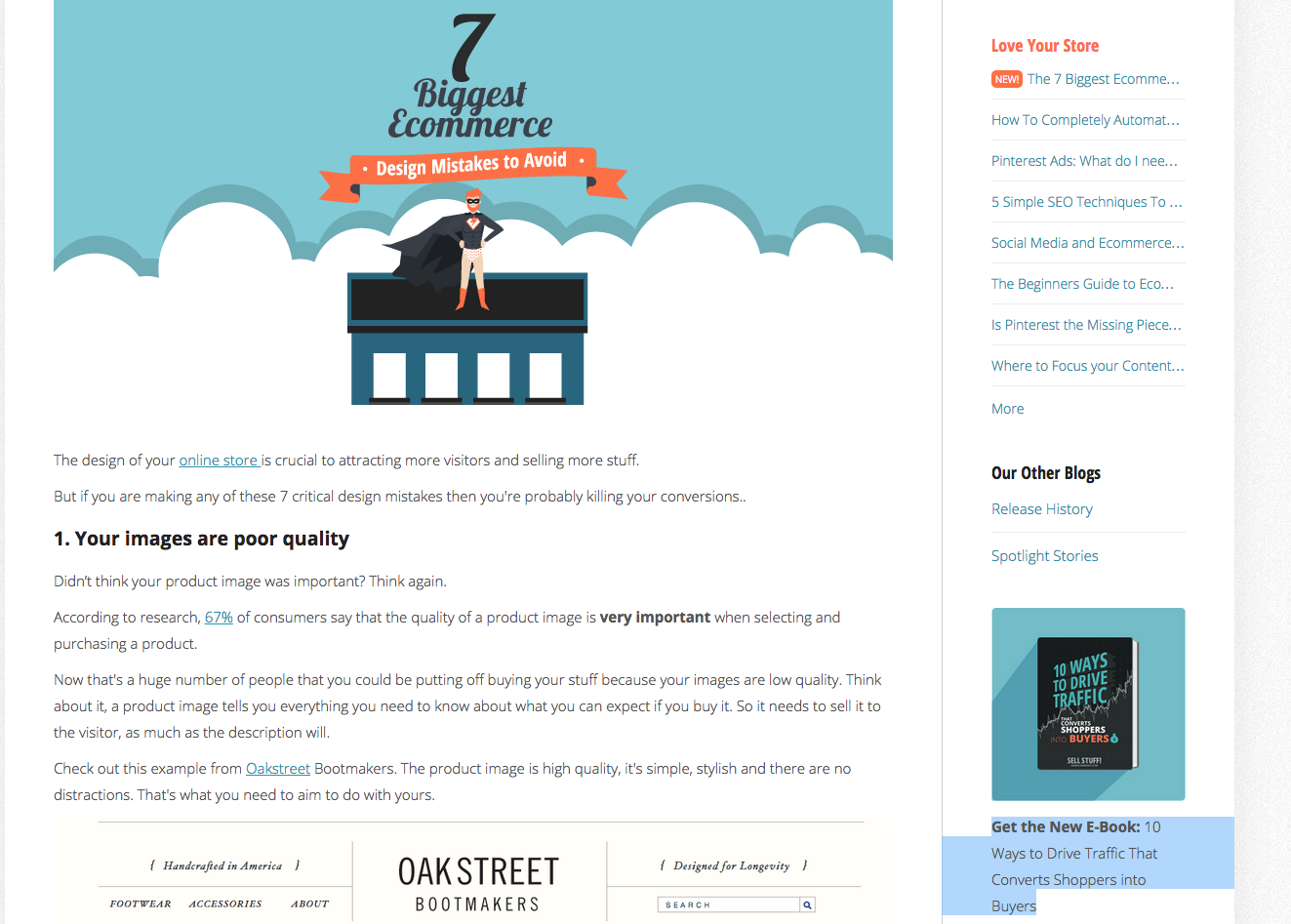You'd expect that a lot of traffic coming through to your website would automatically mean more customers and sales, yet it doesn’t. But why?
There are so many factors as to why your potential customers are landing on your website but immediately taking off again. To name but a few: Your landing page isn’t in harmony with your inbound marketing efforts and has no focal point; what you're offering isn't strong enough and sign up forms are long winded.
These are just some of the reasons and I'm afraid to tell you there are a hundred more. Don't fret though I'm here to give you the low down on what you should do to convert those visitors into customers and not just one stop customers but long term promoters of your business.
Your website is vital in capturing your potential customers as 80-90% of them will use this to help them make their buying decision before getting anywhere near a sale. Meaning you really need to focus in on what you want them to do within the first few seconds of getting on to that landing page. Even before then though you need to be setting the bait for your future customers.
The Content Marketing Methodology
The graphic below shows the step by step approach of what you need to do to convert website visitors into customers

I will aim to highlight what’s required in each stage of this inbound marketing methodology so you too can convert your website visitors into customers.
Related Article: Embarrassed By Your Website Design? Here's What to Do
1. Attract
When beginning your content marketing strategy set your long term goal and be very clear about who you want to attract. Think about who your target audience are, what they will be searching for and the type of content they will be interested in.
Attracting strangers and turning them in to visitors is all about creating more opportunities to be found. A perfect way to do this is through your blog. Think about the things your target audience will be searching for and write blog articles that answer questions related to those topics. This will help you rank your articles for these key phrases and in turn help people find your website. This is the main premise around the attract stage. Once someone is reading your blog you can then start the convert stage to turn them from a visitor into a lead.
Another way to attract people to your website is by using infographics. Infographics are great because they condense numerous facts, statistics and information on a topic into a fun, flowing image that is useful, informative and sharable. Let's look at an example from AmeriCommerce who provide an ecommerce platform to help people sell online.
They used an infographic titled the history of web design on their blog; someone searching the internet for web design, web design trends or the history of web design is likely to come across this and find themselves on AmeriCommerce website, therefore attracting the right people through search.
Another way the Infographic can be used to attract more of the right people to their site is through outreach to other bloggers who write about similar content. Outreach is the process of speaking with these relevant bloggers and publishers with the aim of getting the infographic featured on their website. If the infographic is placed on their site with a link back to AmeriCommerce the result will be they have broadened their reach to more relevant visitors.
Lastly in the attraction stage, use social media to share your other appealing content that will link back to your website. The more shares the more likely you are to attract the correct audience. Building a fan base through social will give you a wider reach and a resource to tap every time you create new content.
2. Convert
Once you've attracted potential customers to your website there needs to be a method to capture their details in some way. This turns people from anonymous visitors to contacts in your database.
First of all, make sure however they may have clicked through or found you, that this is reflected in the landing page. If they clicked through from a blog about a special feature you have to offer, make sure it takes them to a page that reflects this with a Call to Action for them to get it. The use of an ebook to download is a great way to convert your visitors. Offer a link to download the ebook in the blog they've just been reading or in easy view advertise it in the side bar. For example, AmeriCommerce's blog on 'The 7 Biggest Ecommerce Design Mistakes to Avoid' had a well-placed link to their ebook on '10 Ways to Drive Traffic That Converts Shoppers into Buyers.'

Finally, to capture that information ensure you make it as easy as possible, no long winded sign up forms. Use a quick type in your name and email here to download our latest ebook and voila you'll have the information you need to turn those leads into customers.
3. Close
Now that you have captured their details it's time to start the nurturing process to turn them into customers. The ways to do this: email marketing, blog management and social media.
Email Marketing is the key to keeping in touch with the person once they have input their details. The idea being that if you market yourself in the right way to them, through a relevant sequence of emails, you'll be in the forefront of their mind when they decide to make a purchase in your industry area.
In the email you can also use clear recommendations, by making something stand out amongst the content rather than showing equal choices. Psychology studies have shown that if there is more equal choice we are less likely to make a decision but emphasising can make it seem like a good idea and the right choice.
The key here is to send contacts relevant information about your product or service, highlighting why you are better than your competitors and reasons why they should buy. Make your service irresistible and when they are ready to buy you will be the company they consider.
Further blogs and social media at this stage are also recommended. However at this stage it’s important to have content relevant to people further down the sales cycle. People at this stage need more specific content that’s relevant to their purchase decision. Make the blogs more specific to what they're interested in and on social media share content that will prompt those people closer to making a sale.
4. Delight
By now you have the sale but what you really want is a customer that is happy to return time and time again, and more so, someone who will tell their colleagues and friends about your product or service. Inbound marketing is key to getting and keeping these customers and used effectively will delight your customers into a return sale and into becoming promoters of your business. Using advanced strategies which help customers use what you have sold to them is ideal. You also want to create up-sell and cross-sell opportunities to help increase customer lifetime value.
An example of this is presented by AmeriCommerce who provided their customers with a piece of content that advised them on the importance of product photography in ecommerce and a cheat sheet on DIY product photography. In providing this content they are adding value to what the customers have already invested in.
Do this in your own industry area by coming up with advice or tips on how to get the best out of the product or service they have purchased/received from you; the key to creating loyal customers.
Turning website visitors in to customers should be fairly easy if you plan your content marketing in the right way. In today's market it is important as most customers use the internet to search for what they need; all you need to do is cast out the correct bait to attract, convert, close and delight the right customers.